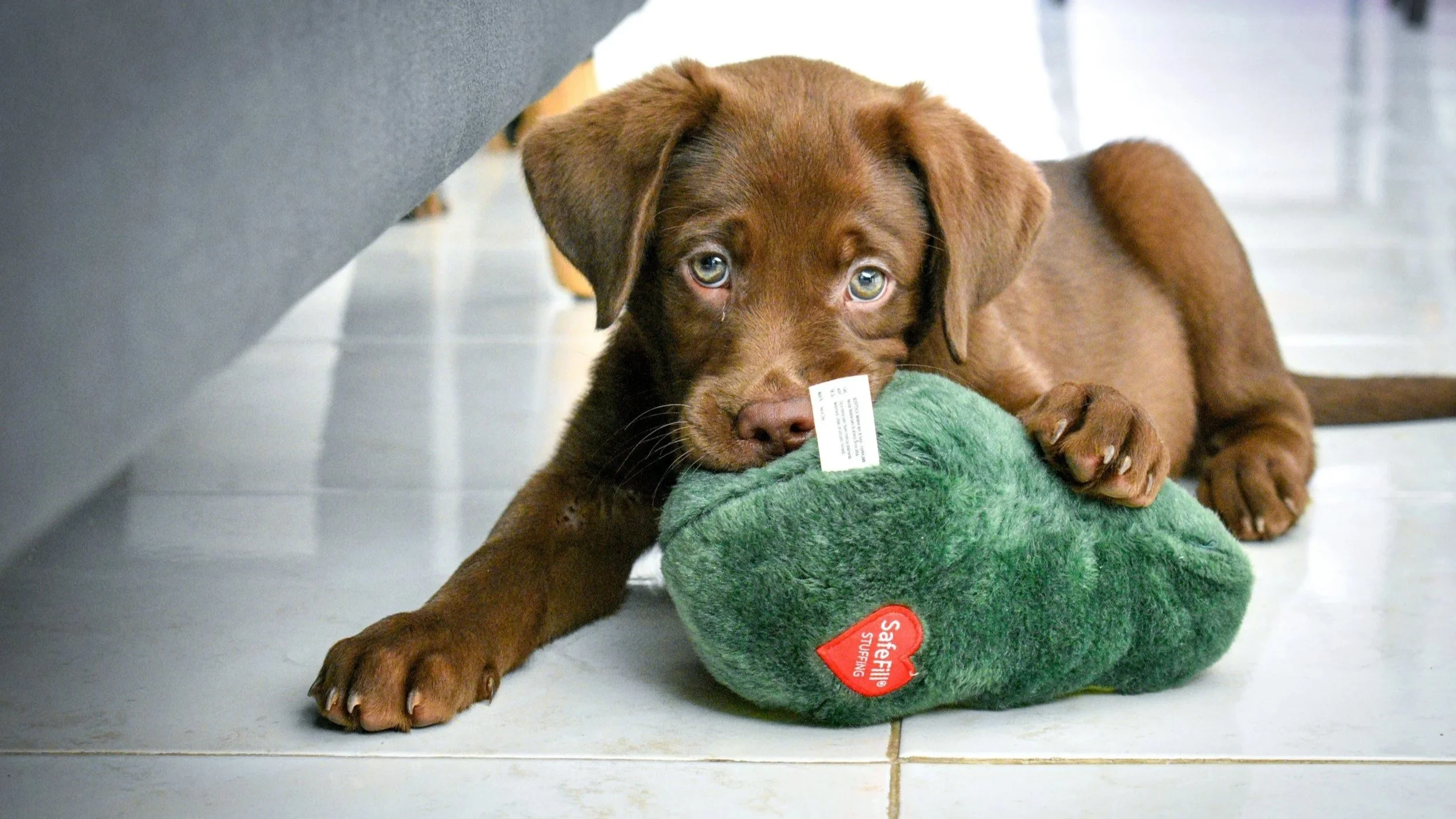Toilet Training your puppy - a kind and practical guide
Bringing home a new puppy is a really exciting time and often a little messy! Toilet training is one of the first big lessons your puppy will learn and with patience and consistency - it doesn’t have to be stressful for either of you.
Many guides jump straight to crate training, but not everyone feels comfortable with that – and that’s absolutely okay. Puppies, like us, are individuals. What matters most is setting them up for success in a way that feels kind and manageable for your household.
Why Toilet Training Takes Time
At around 8 weeks old, puppies have very small bladders and very little control over their bladder. Expecting them to hold it for long stretches simply isn’t realistic at all. As your puppy grows, so their bladder capacity and control will improve naturally. But in the beginning, frequent toilet trips are essential.
Think of it as teaching them where to go, rather than where not to go. That way we can shift the focus onto supporting our puppies through toilet training.
Setting Up for Success at Night
Nighttime can be tricky, especially when your puppy is brand new to your home. If you have decided against, or not keen on using a crate, a puppy pen or safe area can work really well. Many puppies will prefer this set up to a crate arrangement, so pick what works best for you and your puppy.
Here’s how to set up a puppy pen or safe area:
Line the area with bedding and toys for comfort.
Place a puppy pad at one end, just in case.
Over time, as your puppy grows and can last longer overnight, you’ll find the pads aren’t needed.
Alternatively you can set an alarm and take your puppy out quietly during the night, but that’s not always appealing and of course you run the risk of disrupting your puppies sleep. If you do decide to do this, keep everything very calm and quiet so your puppy can settle back to bed afterwards.
This way, your puppy has somewhere safe and appropriate to go if they can’t hold it – without being forced into distress or eliminating on their bedding in a crate.
Daytime Training – Frequent Trips Outdoors
Daytime training is all about being very proactive and taking frequent trips outside. Take your puppy out:
First thing in the morning as soon as they wake up
After meals
After play
After naps
And at least every 30 minutes in between!
Remember, each successful outdoor toilet break is a win! The more often they get it right, the faster they’ll learn.
The Power of Rewards
Whenever your puppy toilets outside, praise and reward immediately with a tasty treat. Timing matters, so if you wait until you’re back indoors, your puppy won’t connect the dots, so carry treats with you so you can reward successes immediately.
By making outside toileting feel like the best thing ever, your puppy will want to repeat it.
Watch Out For Toilet Signs Indoors!
Puppies rarely ask to go outdoors in those early weeks, so here are the most common signs they need to go!
Sniffing
Circling
Biting / Licking at your hands
Whining
Agitated Behaviours
What About Accidents?
Accidents are part of the process. Your puppy isn’t being naughty, when they come indoors and have an accident, they simply don’t yet have the control or understanding. Restrict access to areas of the home where accidents may be more problematic (ie carpeted areas).
Never scold or punish accidents. It only creates confusion and anxiety and your puppy is more likely to go off to toilet out of sight.
Quietly clean up with an enzymatic cleaner to remove odours, so your puppy isn’t encouraged to go in the same spot again.
Focus your energy on catching the successes instead.
During wet or cold weather your puppy may be less keen to go outside, so be prepared to go outside with them.
A Gentle Reminder
Toilet training is a journey, not an overnight achievement. Some puppies pick it up very quickly, whilst others take a little longer. What matters is that you stay calm, consistent and kind. With patience, your puppy will learn and you’ll both come through the toilet training stage with your bond stronger than ever.
Key Takeaways
Tiny bladders mean frequent trips!
Puppy pens and pads can be a kinder alternative to crating overnight.
Reward outdoor toileting instantly.
Accidents are part of learning – never punish your puppy.




